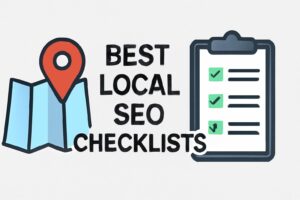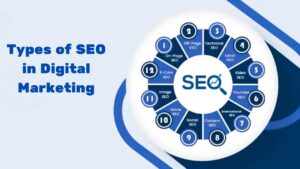In today’s fast-paced digital landscape, the rules of SEO (Search Engine Optimization) are constantly evolving. For local businesses, staying ahead of the game is crucial to stand out in your community, attract more customers, and grow your brand. But with so many SEO strategies out there, it can be overwhelming to figure out what really works.
If you’re a local business owner or marketer looking to boost your online presence in 2025, you’ve come to the right place. This SEO Checklist for Local Business is packed with actionable insights, proven strategies, and examples to help you rank higher on search engines and draw more foot traffic to your door.
Alert: If your website isn’t ranking locally, this checklist is your fix.
Why SEO for Local Business is More Important Than Ever

Before diving into the checklist, let’s briefly touch on why local SEO is crucial for your business. More than half of all online searches today are “local”—meaning, people are looking for products or services near them. Whether someone is searching for “coffee shops near me” or “best plumber in [your city],” SEO can make or break their decision to choose your business.
In fact, studies show that 78% of mobile local searches lead to offline purchases. That means local SEO isn’t just about online visibility; it’s about getting real customers through your door.
The 2025 SEO Checklist for Local Businesses
1. Optimize Your Google My Business (GMB) Profile
Your Google My Business profile is the heart of your local SEO strategy. It’s often the first thing people see when they search for your business or relevant services in their area. To make the most of it:
- Claim and complete your GMB profile: If you haven’t already, claim your listing. Fill out every section, including business hours, services, and photos. The more information you provide, the more Google can match your business with relevant searches.
- Update your business information regularly: Keep your address, phone number, and website up to date. If you change hours, especially during holidays, make sure they reflect that on your profile.
- Encourage reviews: Positive reviews are a key ranking factor. Ask satisfied customers to leave reviews, and respond to them to show that you value customer feedback.
- Post regularly: Google allows you to post updates, offers, and events directly to your GMB profile. Use this feature to keep your audience engaged and show that you’re active.
2. Focus on Local Keywords

When people search locally, they often use terms like “near me” or the name of their city. Here’s how you can leverage local keywords for SEO success:
- Use location-based keywords in your content: For example, if you run a bakery in Austin, Texas, use keywords like “Austin bakery” or “best cupcakes in Austin.”
- Optimize your website meta tags: Incorporate local keywords into your title tags, meta descriptions, and headers (H1, H2, etc.).
- Add location pages: If your business has multiple locations, create a page for each one and optimize it with specific details about that location.
3. Mobile Optimization is a Must
More than half of local searches are done on mobile devices. If your website isn’t optimized for mobile, you’re missing out on a massive chunk of potential customers.
- Ensure your website is responsive: This means your website should look great and work well on smartphones, tablets, and desktops.
- Improve page load times: Slow websites are penalized by Google. Use tools like Google PageSpeed Insights to test and improve your website’s speed.
- Simplify navigation: Mobile users need to find what they’re looking for fast. Make sure your website is easy to navigate on small screens.
4. Build Local Citations
Local citations—mentions of your business’s name, address, and phone number (NAP) on other websites—are a powerful local SEO ranking factor. To get the most out of citations:
- List your business in local directories: Websites like Yelp, Yellow Pages, and local chamber of commerce directories are great places to start.
- Ensure NAP consistency: Make sure your business information is consistent across all platforms. Even small discrepancies can hurt your rankings.
- Get featured on local blogs: Reach out to local bloggers, influencers, and media outlets for mentions or guest posts. This can increase your business’s visibility and credibility.
5. Content That Speaks to Local Audiences
Content marketing isn’t just for big brands—it’s a crucial part of local SEO too. Creating content that resonates with your local community can help you rank higher in search results.
- Write about local events and news: If something big is happening in your area, create content that ties it back to your business. For example, a local restaurant might blog about a food festival in town.
- Create location-specific landing pages: If your business operates in different neighborhoods or cities, create separate pages for each location. Include unique content, like customer testimonials from that area or special offers for local customers.
- Use local imagery: Featuring local landmarks or community events in your photos and videos not only makes your content more engaging but also reinforces your connection to the area.
6. Invest in Local Link Building
Backlinks—links from other websites to yours—remain one of the most important ranking factors in SEO. For local businesses, focusing on building local backlinks can significantly boost your SEO efforts.
- Partner with local businesses: Co-host events or sponsor local organizations and get backlinks from their websites.
- Engage in local community initiatives: Sponsor charity events, local sports teams, or community groups. You’ll often get a backlink in return.
- Leverage local media: If your business gets featured in a local newspaper or magazine, ask for a link to your website.
7. Use Structured Data (Schema Markup)
Schema markup helps search engines understand your content more effectively. It’s especially important for local SEO because it can improve your chances of appearing in rich snippets, the enhanced search results that stand out on Google.
- Add local business schema to your website: This includes details like your business name, address, phone number, hours, and logo. It helps search engines display your information more clearly in search results.
- Use review schema: This lets Google display your ratings directly in search results, making your business more appealing to potential customers.
8. Leverage Social Media for Local Engagement
While social media signals aren’t a direct ranking factor, having an active social media presence can indirectly improve your SEO by driving traffic to your website and boosting brand awareness.
- Engage with local followers: Share content that’s relevant to your local audience. Post about local events, behind-the-scenes looks at your business, or local news that ties into your products or services.
- Use location tags: When posting on platforms like Instagram, Facebook, and Twitter, always tag your location to ensure local users see your content.
9. Monitor Your Results and Adapt
Local SEO is an ongoing process. Regularly track your progress to see what’s working and what needs improvement.
- Analyze local competitors: Keep an eye on your local competitors to see what they’re doing right, and where you can improve.
- Use Google Analytics: Monitor traffic from local searches and see which pages are performing best.
- Track keyword rankings: Use tools like Moz or SEMrush to track your rankings for local keywords.
Conclusion

Staying on top of local SEO trends in 2025 is all about focusing on what’s working now, and adapting to changes in the digital landscape. By optimizing your Google My Business profile, focusing on local keywords, ensuring your website is mobile-friendly, building local citations, and creating engaging content, you’ll be in a strong position to attract more local customers and grow your business.
Remember, SEO isn’t a one-time effort—it’s a long-term strategy. So keep tweaking, testing, and adapting, and you’ll see the results.









Add comment
You must be logged in to post a comment.